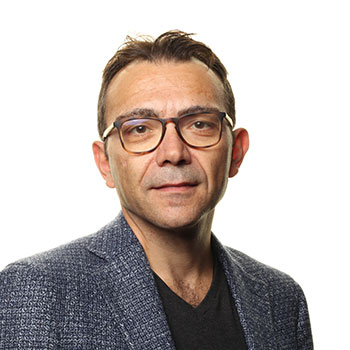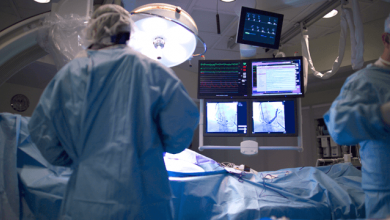Search results
Long QT Syndrome Modelling
Author(s):
Luca Sala
,
Massimiliano Gnecchi
,
Peter J Schwartz
Added:
3 years ago
Article
Joseph C. Wu
Research Area(s) / Expertise:
Job title: Director
Author
Marco Valgimigli
Research Area(s) / Expertise:
Job title: Deputy Chief of Cardiology
Author
Author(s):
Andrew Grace
Added:
3 years ago
Our society acquires and stores data at unprecedented rates. Making sense of it has become a subject of academic interest,1,2 it is widely discussed and has provided a focus of interest to professional advisors,3 in each case with the objective of considering practical applications. Sophisticated interpretation of these data can provide powerful insights. Just recently, in the field of public…
View more
Author(s):
Dario DiFrancesco
Added:
3 years ago
HCN4 (hyperpolarisation-activated, cyclic nucleotide gated 4) channels, the pore-forming α–subunits of ‘funny’ channels originally described in pacemaker cells of the sinoatrial node (SAN),1 are responsible for the early phase of diastolic depolarisation in these cells and are key determinants of pacemaker generation and control of heart rate.2–5 HCN4 channels are selectively expressed in the SAN…
View more
Author(s):
Ghanshyam Shantha
,
Frank Pelosi
,
Fred Morady
Added:
3 years ago
Prevalence of AF and Obstructive Sleep Apnoea
Nonvalvular AF is the most common sustained arrhythmia, affecting nearly 3 million adult Americans.1–4 By 2050, nearly 12–15 million adults in the US will have AF.1 The global prevalence of obstructive sleep apnoea (OSA) is also increasing. OSA is the most common form of sleep-disordered breathing, affecting 10–15% of the general population (6–9% in…
View more
Author(s):
Philippe Charron
,
Eloisa Arbustini
,
Gisèle Bonne
Added:
3 years ago
Most mutations of the LMNA gene affect the heart, causing a dilated cardiomyopathy, ususally with conduction defect and ventricular arrhythmia, with or without skeletal muscle involvement. Although a relatively rare disease, cardiologists should be aware of laminopathies (diseases caused by LMNA gene mutations) because of the particularly aggressive course compared with most other…
View more
Author(s):
Justine Bhar-Amato
,
William Davies
,
Sharad Agarwal
Added:
3 years ago
Ventricular tachyarrhythmias (VAs) most commonly occur early in ischaemia, and patients presenting with an acute MI and ventricular arrhythmias are a group that has a significantly increased risk of mortality.1,2 Thrombolysis primary percutaneous coronary intervention (PCI) and use of beta-blockers, while resulting in the modification of the natural history of an infarct, have also reduced the…
View more
Author(s):
Sotiris C Plastiras
,
Haralampos M Moutsopoulos
Added:
3 years ago
Author(s):
Sharon A George
,
N Rokhaya Faye
,
Alejandro Murillo-Berlioz
,
et al
Added:
3 years ago
More than 100years have passed since the atrioventricular node (AVN) was first discovered by Sunao Tawara1 and described as a “Knoten” of tissue located at the proximal end of the Bundle of His (BoH).2 Despite the numerous advances in knowledge regarding the structure and function of the AVN, there are still several controversies that need to be addressed in both clinical and scientific settings…
View more















